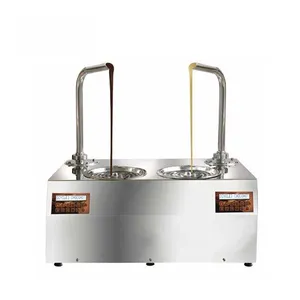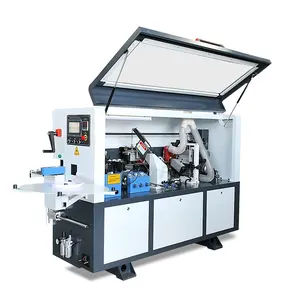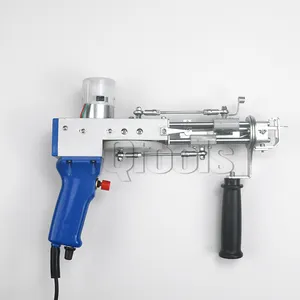Popular in your industry




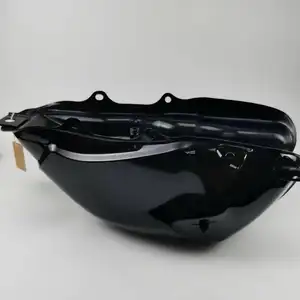






















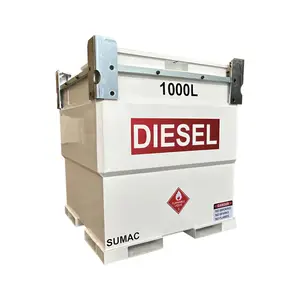














































Top categories
About 1000 litre plastic fuel tank
In an era where efficiency and sustainability go hand in hand, the 1000 litre plastic tank stands out as a beacon of versatility in fuel storage solutions. Unveiled as a game-changer, these tanks offer a harmonious blend of capacity, safety, and environmental consideration. Constructed from robust materials like high-density polyethylene, these tanks are tailored to meet the stringent demands of modern storage, from mitigating fuel flammability risks to ensuring ease of transport. This article delves into the multifaceted world of 1000 litre plastic tanks, exploring their emergence, types, applications, and the innovative designs that set them apart in the marketplace.
The Emergence of 1000 Litre Plastic Tanks in Modern Storage

The evolution of fuel storage has seen a significant shift with the introduction of 1000 litre plastic tanks, addressing both capacity needs and safety concerns. These tanks, often constructed from high-density polyethylene (HDPE), represent a modern storage solution that balances durability with the flexibility of design. While HDPE is permeable to hydrocarbons over time, it remains a viable option for short-term storage, particularly when considering the material's resistance to environmental stress cracking under the duress of transport and kinetic forces.
In the context of modern storage, the 1000 litre plastic tank has emerged as a practical option, especially when evaluated against the stringent standards set by regulatory bodies. These tanks are designed to mitigate the risks associated with the flammability of fuels, leveraging the inherent non-reactivity of HDPE to extend their utility in various settings. The adaptability of plastic allows for a range of applications, from serving as day tanks for power systems to supporting the logistical requirements of various industries.
Exploring the Types of 1000 Litre Plastic Tanks on Alibaba.com

Alibaba.com showcases a variety of 1000 litre plastic tanks, designed to cater to diverse storage needs. Among the selection, cylindrical, closed-top plastic water tanks are prominent, suitable for both indoor and outdoor environments. These tanks are typically crafted from polyethylene, a material known for its durability and suitability for water storage. The cylindrical design is a common choice, providing stability and ease of placement.
The tanks available approximate the 1000 litre capacity, with some offering slightly more storage to accommodate different requirements. They come in darker shades such as black or dark green, which are not just aesthetic choices but functional too. The dark exteriors are strategically chosen to block out sunlight, thereby inhibiting the growth of algae and maintaining the quality of the stored water.
These tanks are part of a broader inventory that includes other styles like fiberglass and collapsible flexible tanks, each with its own set of features and benefits. While the cylindrical plastic tanks are highlighted for their robustness and algae-resistant qualities, the other types available on Alibaba.com also present viable options for storing liquids in various contexts.
Versatile Applications of 1000 Litre Plastic Tanks

Intermediate bulk containers (IBCs) are not only for industrial liquids or hazardous chemicals but are also highly suitable for water storage. These containers, with a capacity to hold a substantial 1000 litre volume, are versatile in their use. They are often seen on construction sites and in large warehouses, indicating their utility in various industrial and commercial settings. The design of IBCs, which allows for easy transport, adds to their versatility, making them a practical choice for storing large quantities of water or other substances.
The reusability of IBCs further underscores their versatile applications. They can be employed repeatedly for different purposes, which is both cost-effective and environmentally friendly. Their robust construction, typically featuring a protective steel cage and pallet mounting, enables them to be stacked vertically, optimizing space for storage and transport. This stacking capability is particularly beneficial in settings where space efficiency is crucial.
While IBCs are commonly associated with water storage, their applications extend beyond this. They can be adapted for use in various sectors, including agriculture, where water is an essential resource. The ability to replace individual parts of a rigid IBC also contributes to their versatile nature, as it extends their lifespan and functionality across different uses.
Key Features and Innovations in Tank Design
Innovations in the design of plastic fuel tanks have led to significant advancements in their functionality and efficiency. The latest designs in the 1000 litre capacity range showcase a remarkable blend of lightweight construction and robustness, with the relative density of plastic being substantially lower than that of metal. This reduction in weight contributes to overall vehicle efficiency, enhancing speed and fuel economy. The design flexibility of plastic allows for the creation of complex shapes, optimizing space utilization within the vehicle and potentially increasing fuel capacity.
The process of manufacturing these tanks has also seen technological progress. Hollow blow molding is a preferred method, enabling mass production while simplifying the production process without the issues of adhesion found in other techniques. This method involves heating, melting, and extruding the material, followed by inflation within a mold to achieve the desired shape. The result is a seamless product with uniform wall thickness and integrated durability.
Material selection is critical, with high-density polyethylene (HDPE) being a common choice due to its performance at extreme temperatures and ease of molding. However, to enhance the barrier properties and reduce fuel permeation, advanced multi-layer co-extrusion technologies are employed. These typically involve a combination of HDPE, a bonding layer, a barrier layer, and another bonding layer, culminating in a five-layer structure that significantly resists fuel penetration while maintaining the tank's structural integrity.
Material Specifications and Durability
Polyethylene, specifically high-density polyethylene (HDPE), is a material commonly used for marine fuel tanks due to its resistance to corrosion. HDPE tanks are noted for their durability, often outlasting their aluminum counterparts, and are not affected by ethanol, which can be a significant advantage given the prevalence of ethanol in fuels. The non-metallic nature of plastic fuel tanks means they do not induce galvanic action, potentially offering a longer lifespan for other boat components. Additionally, the seams of polyethylene tanks are considered strong, as the tensile strength of the material at the seams is relatively robust compared to aluminum.
However, there are some considerations to keep in mind with plastic tanks. They typically lack internal baffles, which can limit fuel movement and reduce stress on the tank walls. There is also a perception that plastic tanks may emit fuel vapors over time, although this is often disputed and may not be a significant issue. Customization options for plastic tanks can be limited due to the manufacturing process, which can make custom tanks more costly.
In contrast, aluminum tanks are known for their strength and the presence of baffles that stabilize fuel. They can be custom-made to fit specific designs, allowing for optimal use of available space. However, aluminum tanks can suffer from corrosion, particularly when in contact with moisture or when not properly isolated from potential galvanic reactions. The quality of the aluminum alloy used is also a critical factor in the longevity of the tank.
Advantages of Using 1000 Litre Plastic Tanks for Storage
Plastic tanks, particularly those with a capacity of 1000 litres, present a cost-effective solution for fuel storage. Their affordability stems from the inherent lower cost of plastic as a material and the reduced complexity in their manufacturing process. Unlike their steel counterparts, plastic tanks offer a lightweight construction, simplifying transportation and installation. This feature can be particularly advantageous in scenarios where mobility and ease of handling are priorities.
Maintenance of plastic tanks is relatively straightforward, primarily involving routine cleaning to remove any debris or sediment. They are less susceptible to leaks compared to other materials, which can mitigate the risk of environmental contamination. Additionally, the durability of plastic tanks, while not on par with steel, is sufficient for many storage needs, with resistance to UV exposure, extreme temperatures, and adverse weather conditions.
From an environmental perspective, plastic tanks have a smaller carbon footprint in their production and are easier to recycle at the end of their lifecycle. This can contribute to a more sustainable approach to fuel storage. Furthermore, the versatility of plastic allows for the creation of tanks that comply with various regulations, ensuring that they can be adapted to meet specific industry requirements.
Safety and Maintenance Considerations
For ensuring the longevity and safety of 1000 litre plastic tanks, regular maintenance is crucial. These tanks, designed for durability, can last several years if properly cared for. It's advisable to conduct a thorough quality assurance check every two to three years to confirm safety standards are met. The maintenance of these tanks involves inspecting individual components, which can be replaced as needed. The steel frame of a rigid IBC, for instance, can endure for a considerable time with effective care.
When it comes to storing water, specifically, it's essential to maintain its cleanliness to prevent contamination. Water should be rotated every six months to avoid the risk of it becoming toxic, especially when stored in plastic containers. If water has been stored for an extended period, conducting a quality test before use is recommended. To keep the water in a pristine condition, tanks should be sealed correctly, and the use of water filters or purifiers can be beneficial. Stacking full IBC containers is possible when they are on their steel pallet mounts, but it should be done with proper safety measures and training.
How to Choose the Right Tank for Your Needs on Alibaba.com
Conclusion
The 1000 litre plastic tank has emerged as a cornerstone in the realm of modern storage solutions, offering a multitude of advantages that cater to diverse storage needs. From their inception as a practical response to safety and capacity concerns to their evolution into a product of technological innovation, these tanks have proven their worth across various industries. Their lightweight yet durable construction, ease of maintenance, and adaptability to meet regulatory standards make them a cost-effective and environmentally friendly option. As we have seen, whether it's through the vast selection on Alibaba.com or the specific design features that cater to marine or industrial use, the 1000 litre plastic tank is a testament to the advancements in storage technology. In conclusion, for those seeking a reliable and sustainable storage solution, the 1000 litre plastic tank offers a compelling choice that balances performance with environmental responsibility.

